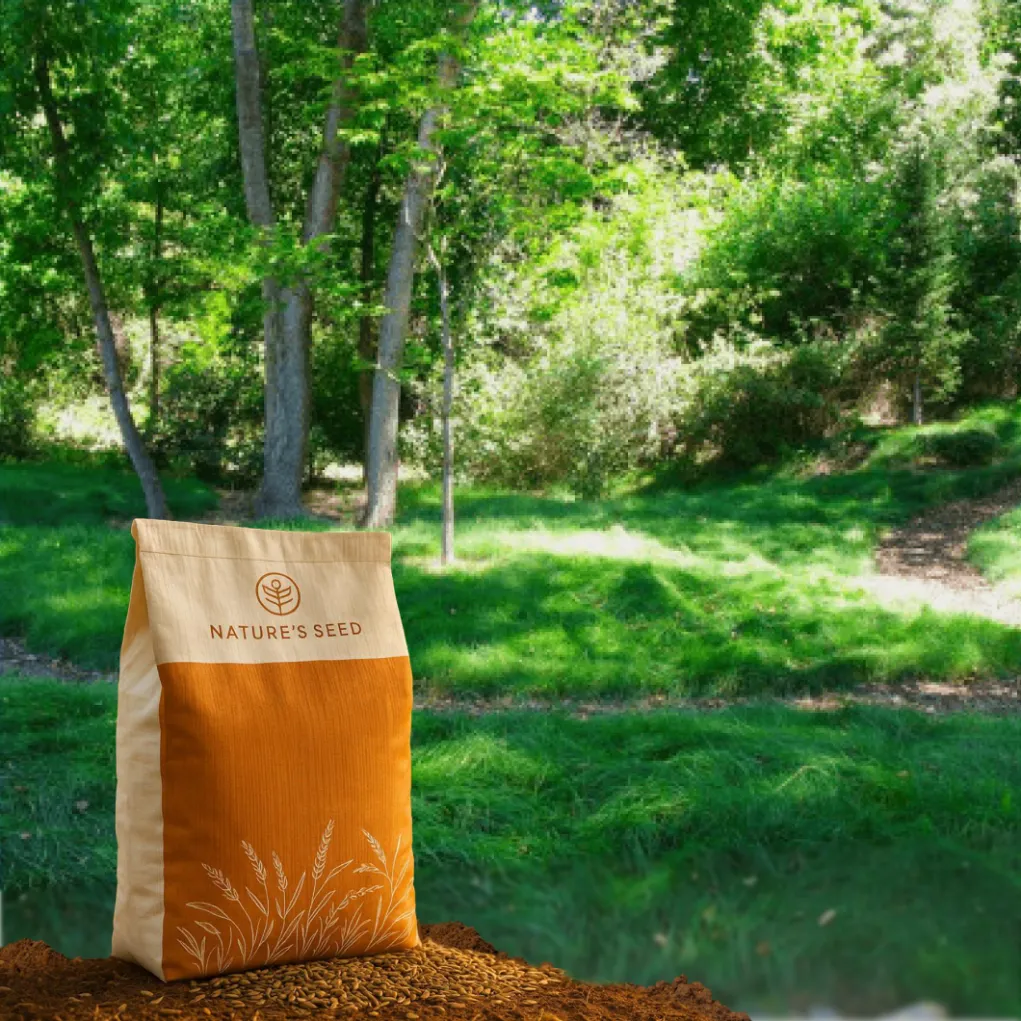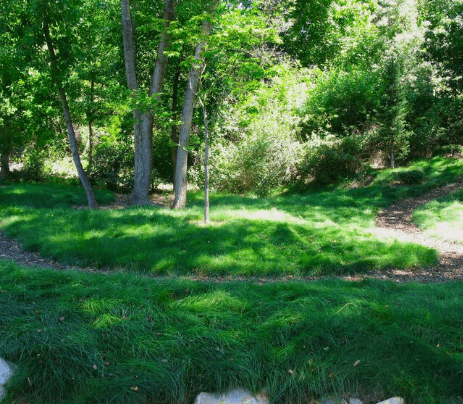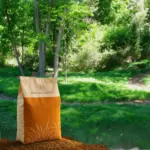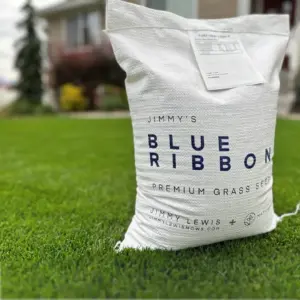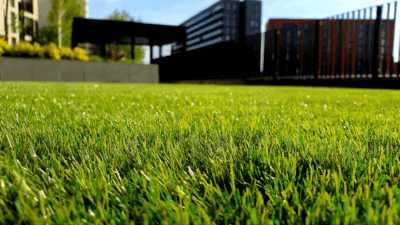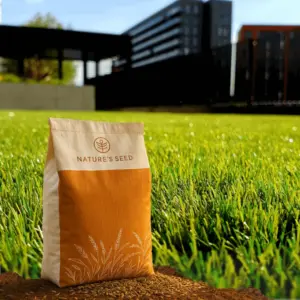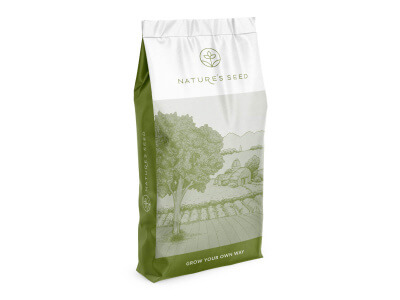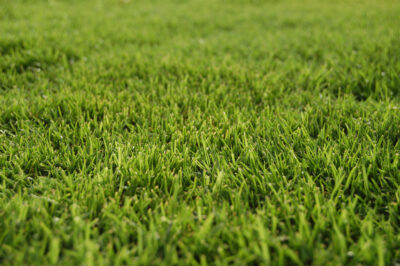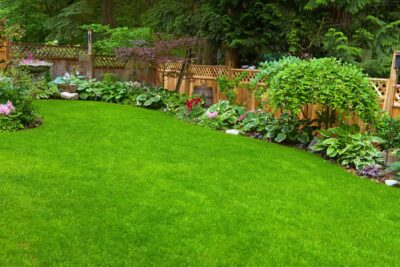Nature's Seed Fine Fescue Turf Mix
Get a lush, low-water lawn with our TWCA-certified Fine Fescue Mix, combining hard, Chewings, sheep, and creeping red fescue.
It uses 30–40% less water than typical turf and stays green with minimal care—even after weeks without rain.
The fine-textured grass creates a soft, dense carpet with rich green color and excellent shade tolerance.
It thrives in shade or sun (in cooler regions) and stays vibrant through spring, fall, and even mild winters.
Perfect for lawns with a mix of sun and shade, this blend delivers beauty and resilience with less work.
Specifications
Sun Requirement
Full sun to partial shade. Excellent shade tolerance
Soil Preference
Grows best in well-drained soils.
Soil pH
6.0–7.5 is optimal.
Time to Maturity
sprouts visible in ~5–12 days extension.purdue.edu . Mow-ready in ~60 days
Height when mature
6–12 inches
Seeding Rate
5 Lb/Sq Ft
Planting Depth
1/8 – 1/4 inch
Fine Fescue Low Water & Maintenance Turf Mix
SKU: TURF-FINE
Will the seed work for your area?
Check your region
select quantity
Description

Fast germination for quick green-up
Fine fescue germinates fast, often within a week under ideal conditions, giving you quick green-up and coverage.
It establishes faster than Kentucky bluegrass, helping to outcompete weeds and reduce erosion early on.
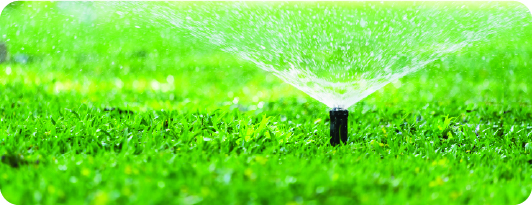
Water-wise and drought tolerant
This mix is highly drought-tolerant, using far less water than typical lawns.
Established fine fescue can survive 3–4 weeks without rain, going dormant and greening up when moisture returns.
You’ll save water—0.5–1 inch per week is usually enough, compared to 1.5+ inches for other grasses.
Deep, infrequent watering is ideal, as its fibrous roots grow deep to find moisture.
TWCA certification proves it stays green with significantly less irrigation, making it perfect for drought-prone areas.
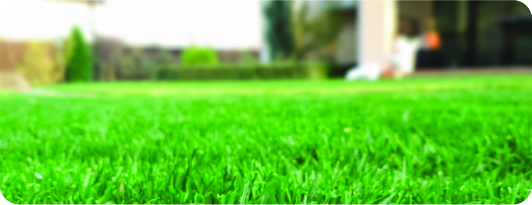
Thrives in shade (and sun)
Fine fescue is the best cool-season grass for shade, thriving where others struggle.
It grows thick in dappled or half-day shade, making it ideal for tree-covered or north-facing areas.
In cooler climates, it also handles full sun well, especially with some moisture in hotter regions.
This light adaptability means you get a uniform lawn across sun and shade.
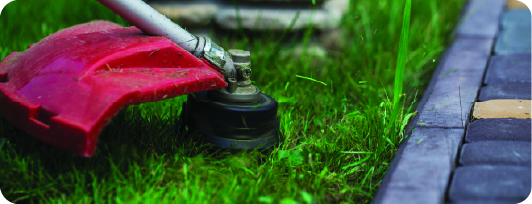
Low-maintenance, “no-mow” potential
Say goodbye to constant upkeep—fine fescue is a true low-maintenance lawn.
It grows slowly, reaching only 6–12 inches uncut, so you can mow just every few weeks—or even a few times per season.
Many choose to keep it at ~3 inches, while others let it grow for a natural, no-mow look, trimming once or twice a year.
It also needs minimal fertilizer—just 1–2 light feedings per year keep it green and healthy.
With less mowing, feeding, and watering, you get a beautiful, easy-care, eco-friendly lawn.
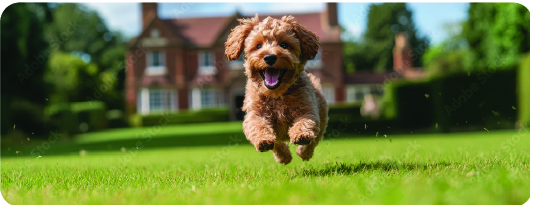
Durable and family-friendly
This blend creates a dense, soft lawn that’s perfect for kids and pets to play on.
The fine blades form a cushiony mat that’s gentle underfoot and pleasant to walk or sit on.
Once established, fine fescue handles moderate foot traffic well—ideal for typical family use.
Hard fescue adds extra wear tolerance, making the mix durable for everyday play and pet activity.
Its thick, upright growth also helps crowd out weeds and reduce bare spots, especially when mowed taller.
The result is a lawn that’s comfortable, resilient, and easy to maintain.
Description
Detail Product
Sun/Shade
Grows in full sun to medium shade.
Height
6–12 inches tall
Seeding Rate
5 Lb/1,000 Sq ft
Uses
Low-maintenance home lawns, Shady lawns, Drought-prone areas, Slopes, banks, and erosion control sites, “No-mow” natural lawns, golf course roughs, park lawns
Color
Rich green hues
Water
Rich green hues
Native
Introduced species
Life Form
Perennial cool-season grasses
Seeding and Growing guide

Soil Preparation – Test & clear the area
Test your soil’s pH and nutrients first; add lime if pH is below 5.5.
Remove existing grass and weeds using herbicide or manual methods.
Mow short, rake debris, and loosen the top 2–4 inches of soil by aerating or light tilling.
Remove thick thatch and mix in compost if needed.
Rake smooth with some loose soil—aim for a firm, clean seedbed with good seed contact.

Seeding timing
Timing:
Seed in late summer to early fall for best results; spring seeding also works if done early.
Seeding:
Apply at ~5 lbs per 1,000 sq. ft., spreading in two directions for even coverage.
Lightly rake to cover seed about 1/4″ deep—don’t bury it too much.
Use a roller or press seed in for good soil contact.
Add light straw mulch if desired, keeping some soil visible.
Tip:
You can dormant seed in late fall; seed will sprout in spring.

Watering & First Mow – Water for germination
Watering:
Keep soil moist with 3–4 light waterings daily until seeds sprout (in 7–10 days).
Then water 2–3 times daily, tapering to once a day or every other day after 3 weeks.
Avoid puddles and dry soil—water in the morning or midday.
Mowing:
Mow when grass reaches ~3 inches (about 6–8 weeks after seeding).
Use a sharp blade, cut to 2.5–3 inches, and avoid mowing more than 1/3 of the height.
Minimize foot traffic until after 2–3 mowings.
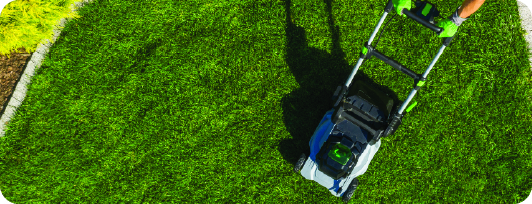
Ongoing Maintenance
Fertilizing:
Apply 1 lb of nitrogen per 1,000 sq. ft. per year, split spring/fall or all in early fall.
Avoid summer feeding and skip phosphorus unless needed.
Mowing:
Keep at 2.5–3.5 inches, mow when grass hits 4–5″, and follow the 1/3 rule.
Mow weekly in spring, less often in summer; leave clippings.
Watering:
Water 1 inch/week or let go dormant—it’ll green up in fall.
Water deeply, then wait for the top 2–3″ of soil to dry.
Weeds:
Mow high, fertilize lightly, and spot-pull weeds.
Use herbicide only after 3–4 mowings—not in summer heat.
Thatch & Aeration:
Aerate in fall if thatch exceeds ½ inch.
Winter Care:
Cold-hardy—just mow to 2.5–3″ before winter and clear leaves.
Questions & Answers
When is the best time to seed this fine fescue mix?
Seed in late summer to early fall (August to mid-September) for best results.
Cool temps and fall rains help fine fescue establish with less weed pressure.
Other Options:
Spring seeding (April in northern areas) also works but requires more moisture and weed control.
Dormant seeding in late fall (after frost) is possible—seed will sprout in spring.
Avoid mid-summer seeding due to heat stress unless you can water frequently.
Bottom line:
Fall is the ideal window for easy, successful establishment.
Can I overseed this mix into an existing lawn?
Yes, you can overseed fine fescue into an existing lawn to thicken it or add drought/shade tolerance.
Mow low (~2″) and rake or aerate to expose soil for good seed contact.
Apply seed at ~2.5 lbs per 1,000 sq. ft., then lightly rake or drag to settle it in.
Keep the area moist like a new lawn, and continue mowing low until seedlings establish.
Avoid herbicides 1–2 months before and after seeding.
Early fall is best; spring is a second option.
Over time, fine fescue blends in well and can thrive under low-maintenance conditions.
How much water does this lawn need once established?
Fine fescue uses significantly less water than most lawns—0.5 to 1 inch per week (including rain) is usually enough.
That’s about 30–50% less than Kentucky bluegrass, which often needs 1.5 inches weekly.
It can survive up to a month without water by going dormant and greening up later.
To stay green, water deeply but infrequently—about ½″ every 5–7 days if dry.
In spring and fall, rain is often enough; in hot, dry summers, you may need up to 1″ per week.
Avoid overwatering—fine fescue prefers drier soil and doesn’t like soggy conditions.
Is this mix truly drought tolerant (will it stay green without watering)?
Yes, this mix is one of the most drought-tolerant cool-season options available.
Fine fescues have deep, fibrous roots and survive dry spells by going dormant.
Hard and sheep fescue in this blend are top performers in drought trials—staying green longer and recovering well.
In severe drought, the lawn may brown and go dormant, but it survives and regrows when rain returns.
Just 0.5″ of water every 2–3 weeks can keep it alive and partially green.
It often stays greener than bluegrass in dry summers due to its low water needs.
This drought resilience is why it earned TWCA certification—using 30%+ less water than standard lawns.
How soon can I mow the new lawn, and when can we use it for foot traffic?
First Mowing:
Mow when grass reaches ~3 inches, usually 6–8 weeks after seeding.
Wait until roots are established and soil is firm—don’t mow too early.
Use sharp blades, cut to ~3 inches, and remove no more than 1 inch on the first cut.
Foot Traffic:
Limit heavy use for the first 2–3 months after seeding.
After 2–3 mowings (~8–12 weeks), regular foot traffic is fine.
Once established, fine fescue handles moderate use like family play, but avoid repetitive heavy wear.
If the lawn is drought-stressed, hold off on traffic until it’s rehydrated.
How do I prevent weeds in this lawn, especially during establishment?
The best weed control is maintaining a thick, healthy fine fescue lawn.
-
Mow high (3″ or more) to shade soil and suppress weed seeds.
-
Fertilize lightly—too much nitrogen invites weeds and disease.
-
Water deeply and infrequently to discourage shallow-rooted weeds like crabgrass.
-
During establishment, avoid herbicides until after 3 mowings (~8–12 weeks); mow and hand-pull weeds instead.
-
Once mature, spot-treat as needed and apply pre-emergents in spring (but not the first year).
Fine fescue also has natural weed-suppressing traits, helping keep your lawn clean with minimal effort.
Still have
questions?
Our planting experts
are here to help.
Call Us
1-800-123-4567
8 AM–5 PM
Monday–Friday
Reviews
| Weight | N/A |
|---|---|
| Sun/Shade | |
| Est Rate | |
| Texture | |
| Seeding Rate | |
| Uses | , , , |
| Color | |
| Mix Contents |
25% Hard Fescue 25% Sheep Fescue 25% Chewings Fescue 25% Creeping Fescue |
| Water | |
| Native | |
| Life Form | |
| Topseller Description |
Maybe you’ve tried maintaining a bluegrass or ryegrass lawn but experienced issues with irrigation, limited sunlight, and poor soil quality. Or perhaps you’re interested in creating a low-water use and more naturalized landscape. We understand these needs and are proud to introduce our Fine Fescue grass seed mix, which combines four low-growing fine fescues: Hard Fescue, Sheep Fescue, Chewings Fescue, and Creeping Red Fescue. Together, these cool-season grasses can tolerate lower temperatures, require less water, and are more shade tolerant than traditional home lawns. They are also highly adaptable to poor soil conditions and need little fertilizer. Learn more about our fine fescue grass seed below. We’re proud of our Fine Fescue Seed Mix because it’s carefully formulated to help your lawn grow in all conditions. Fine fescue grass seed thrives in cooler climates and tolerates very low temperatures. This makes it perfect for use in the northern states from northern California stretching east all the way to Illinois and New York. |
| Pounds | , , , |
| Lowest price | |
| Coverage Area |
